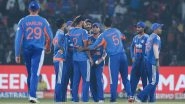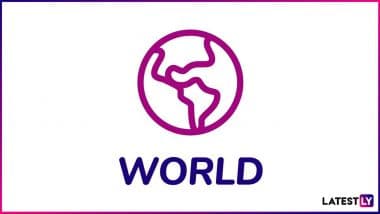New York, Jun 18 (AP) Voters will likely pick the next mayor of New York City next week in a Democratic primary that will also be a major test of ranked choice voting, a system that lets voters rank several candidates in order of preference instead of choosing just one.
Two years after city voters approved a measure to use the ranked choice system for primaries and special elections, Democrats will be asked to rank their top five out of 13 mayoral candidates on Tuesday's ballot.
The primary winner will almost certainly win the November general election in overwhelmingly Democratic New York City.
If the process goes smoothly it may encourage other cities and states around the U.S. to consider ranked choice voting, which has been used for years in cities including San Francisco and Minneapolis and has been adopted by the states of Maine and Alaska.
“I hate to quote Frank Sinatra, but if you can make it in New York you can make it anywhere,” said Susan Lerner, the executive director of Common Cause New York, which spearheaded the 2019 campaign for ranked choice.
Rob Richie, the executive director of FairVote, a national organization that promotes ranked choice voting, said he believes the implementation of the system in New York can accelerate acceptance.
“I think that New York, by being seen as going well, will be very reassuring to people,” Richie said. “If it's seen as rocky, it'll just mean people will still ask questions.”
Under New York City's system, ranked choice procedures only kick in if no candidate gets more than 50% of the vote. With such a large field of legitimate contenders, that's likely to happen this year in the Democratic primary.
Most recent polls have suggested that Brooklyn Borough President Eric Adams is the favorite, getting ranked first by a little less than a quarter of likely voters. Other top contenders include civil rights lawyer Maya Wiley, former city sanitation commissioner Kathryn Garcia and former presidential candidate Andrew Yang, who have been polling between 6 and 12 points behind.
If none of them gets half of the first-place votes, several rounds of ranked choice tabulation begin. The candidate in last place is eliminated. All ballots cast for that eliminated candidate are then reallocated to the No. 2 choices of those voters. The votes are then re-tallied and the candidate in last place is eliminated again. The process repeats until there are two candidates left. The one with more votes wins.
Calculating the winner might take two weeks or more, but Lerner said that's due to state laws regarding the counting of mail-in ballots — not the ranked choice system.
The ranked choice rounds are done by computer and will be “almost instantaneous” once all the eligible mail-in ballots have been determined, she said.
Early voting started June 12 in the primary to replace the term-limited Mayor Bill de Blasio.
One concern about the new system is that it might confuse an unfamiliar public.
Several people who voted early at the Masonic Temple in the Fort Greene section of Brooklyn on Wednesday said they had no trouble understanding the ranked choice system, though some liked it better than others.
Dee Parker, who is 70, said she researched the candidates and ranked five choices in most of the races. “It was too much time spent,” Parker complained. “I didn't find it difficult, just time consuming.”
Josh Hartmann, 50, said he was “a big fan” of the new system even though figuring out his rankings was more work than previous elections have demanded. “I think it gives more diversity in the candidates,” he said.
Agustin Ricard, 63, a Dominican immigrant voting in his first mayoral primary, said he understood the ranking system but chose not to use it. “I voted for just one candidate for mayor,” he said in Spanish.
New York City is also using the system in primaries for other municipal offices including city comptroller, borough president and City Council. There is also a Democratic primary for Manhattan district attorney, but that race will not be decided by ranked choice voting since it is a state office, not a city office.
Ranked choice advocates say the system enhances democracy by giving voters more choices. With ranked choice, a voter doesn't have to worry that a vote for their favorite candidate will be “wasted” if that candidate trails several rivals: Their No. 2 or No. 3 choice could win the race.
New York City won't be the only jurisdiction employing ranked choice voting for the first time this year. Salt Lake City and 20 other cities in Utah will use the system for the first time in municipal elections this fall.
New York City voters approved ranked choice voting by a wide margin in the 2019 referendum, but a group of City Council members and community organizations filed a lawsuit last December seeking to block its implementation, arguing that the system was being rolled out too hastily and would violate the federal Voting Rights Act.
The ranked choice foes have said the new system would have an adverse impact on voters of colour.
Hazel N. Dukes, president of the New York State conference of the NAACP, compared ranked choice voting to voter suppression in a column in the Amsterdam News.
“Studies have shown that a disproportionate number of Black Democrats, particularly older voters, vote for only one candidate, so a Black candidate that finishes ahead with first place votes can ultimately lose if white voters fully avail themselves of the RCV option,” Dukes wrote.
City Council member Kalman Yeger charged bluntly at a December public hearing, "Ranked-choice voting is racist. It is designed to be racist. It's intent is to be racist and its result in New York City will be racist. It is designed to prevent minorities from electing their own.”
A judge dismissed the lawsuit last month, but Yeger and other ranked choice opponents on the City Council have introduced legislation seeking to overturn it.
Lerner said evidence including exit polling of voters in City Council special elections earlier this year does not support the contention that ranked choice voting favors one ethnic group over another.
“We're working closely with the NAACP and other groups to be sure that every voter in every community to the best of everyone's ability has heard about ranked choice voting before they get to their polling place,” she added. (AP)
(The above story is verified and authored by Press Trust of India (PTI) staff. PTI, India’s premier news agency, employs more than 400 journalists and 500 stringers to cover almost every district and small town in India.. The views appearing in the above post do not reflect the opinions of LatestLY)













 Quickly
Quickly











